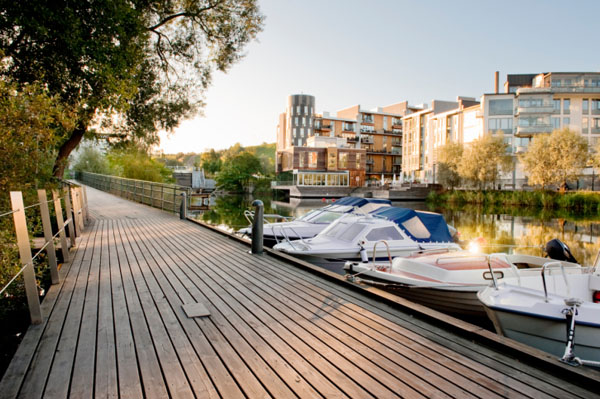C200: I Dream The City Resilient
Green buildings are great. Now we need to connect them together into smart, green, and semi-autonomous districts to create a resilient city.
We know it can work here. The recent Yesler Terrace Sustainable District Study shows that a green building/sustainable district/centralized infrastructure hybrid can provide high reliability and high sustainability for the same or lower costs than traditional infrastructure. For example, by treating and reusing wastewater on site we can reduce Yesler Terrace’s future potable water use by up to 50 percent and wastewater flows by up to 70 percent for less cost than paying Seattle’s sewer and water rates. The study also shows that a district thermal loop fueled by renewables could provide the hot water, space heating and cooling needs of Yesler Terrace redevelopment. The energy for the loop could be cost-effectively provided by sewer heat recovery, solar hot water, and geo-exchange. Where appropriate the energy district could even be extended to willing neighbors.
Adding such district systems to Seattle is the next rational step on the path to a resilient and sustainable city. Smart, self-organizing systems with real-time monitoring and feedback loops will play a role. But it is not just technology alone. Sun and shade, rain and wind, soils and vegetation are also foundational no-tech solutions that contribute to resilient and beautiful district infrastructure.

< The Hammerby Sjostad brownfield redevelopment in Stockholm employs numerous sustainable district strategies. >
Districts designed for resilience recover more quickly from extreme events – whether earthquakes, tsunamis, storm surges, rainstorms, snow, or heat waves. If parts of the centralized systems go down, the resilient districts can supply much of their own needs. If district systems have difficulties, the green buildings or centralized systems can serve as temporary backups. All of them working together create a robust and flexible buffer that helps to deflect the impacts of rare but predictable disturbances.
A resilient Seattle of green buildings, semi-autonomous districts, and centralized backbone infrastructure would be adaptable and sustain itself over time. It would elegantly connect low-tech/no-tech natural systems with high-tech water, energy, mobility, and communication systems. At each scale, citizens would see natural systems working together with sophisticated technologies to create highly livable and aesthetically beautiful surroundings. As a design strategy it would future-proof Seattle by improving the likelihood that the system and its services will perform successfully under a wide range of future environments and day-to-day conditions. And as the Yesler Terrace study shows, district systems can thrive in direct competition with the costs and risks of business-as-usual.
>>>
Steve Moddemeyer is a Principal for Sustainable Development at CollinsWoerman in Seattle and co-authored the Yesler Terrace Sustainable District Study.


